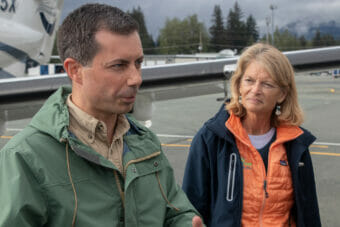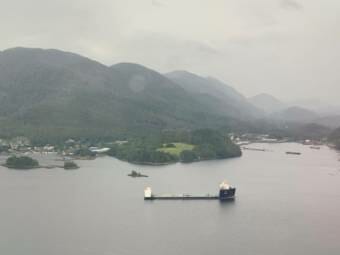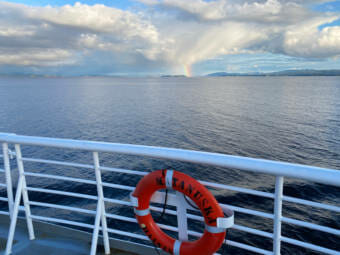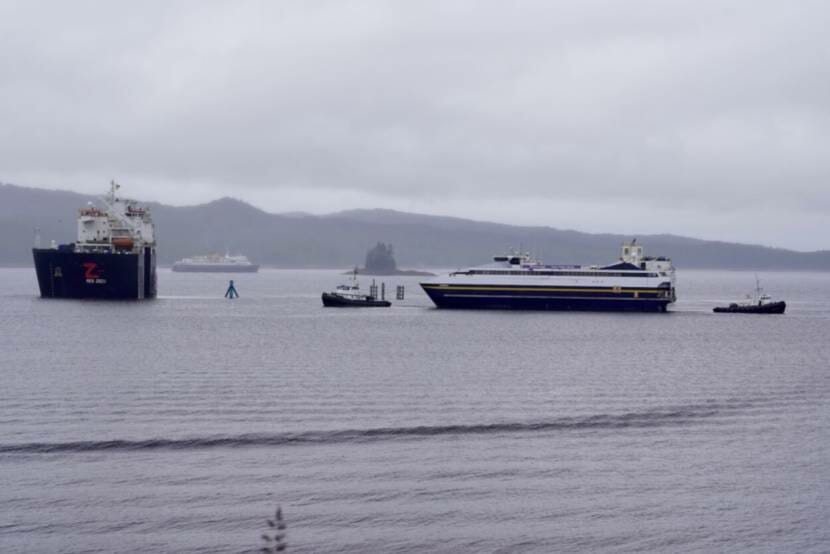
Two former Alaska Marine Highway ferries started their journey to Spain Friday morning.
A crowd gathered as tugs pulled the fast ferries Fairweather and Chenega from Ketchikan’s Ward Cove out to a waiting transport ship.
“Big ol’ things moving. Who doesn’t want to see that?” remarked Kalijah Lecornu, standing at Murphy’s Landing, a few miles north of downtown Ketchikan. He watched as two Amak Towing tugs pulled the 235-foot state ferry Chenega onto a waiting heavy-lift ship.
The 711-foot Red Zed 1 arrived in Ketchikan in April in anticipation of this moment. As Lecornu and a crowd of a couple dozen watch, the vessel is partially submerged — it’s taken on water to allow the ferries to be pulled aboard and secured by divers. Later, the vessel will pump water out of its ballast tanks, bringing its deck — and the Chenega and Fairweather — back above the surface.
But from the shore, progress looks pretty slow.
“Yeah, a big boat taking a long time. I think it’s gone backwards as of now. But really, [it’s] still exciting. The inches it’s moving [are] breathtaking,” Lecornu said.
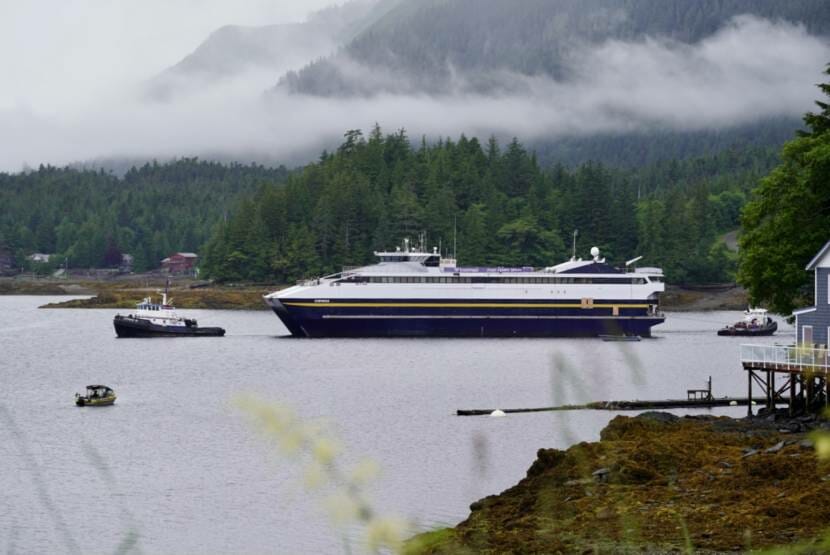
The Red Zed became a familiar sight over the past few months in Ketchikan’s Tongass Narrows. Angie Taggart said she looked out at the massive U-shaped vessel almost daily as she drove by on her way to walk her dogs at Ward Lake.
“We’ve all been waiting — I think the whole town’s been waiting to see this process for a few months. But it’s sad to see the ferries leave,” she said.
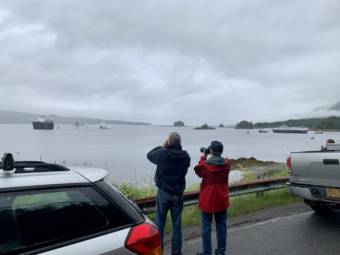
Several people said it was a bittersweet occasion.
“To me, it’s sad to see it go,” said retired Alaska Marine Highway captain Bill Hopkins, watching from shore.
He said he sees the vessels as a symbol of mismanagement of the ferry system. He says things started to change once the aluminum-hulled catamarans entered service in the mid-2000s.
“From my point of view, as soon as those vessels came into the fleet, so much money was diverted their direction [that] the rest of the fleet somewhat suffered at a time when the rest of the fleet was aging, and the maintenance was becoming critical,” he said. “The money just got spread too thin.”
The two fast ferries cost the state $68 million to build. Though their speed made them popular, they took more fuel and maintenance to run and struggled in rough seas. Cost-cutting decisions pulled them from service after about a decade servicing Alaska communities. The state of Alaska negotiated $5.1 million for the pair in a sealed-bid auction to a Spanish ferry company.
Hopkins said he’d like to see the state make smarter investments in the future.
“They’ve done everything possible except replace the older ships that need replacing. They’ve tried high-speed ferries. They’ve tried Alaska Class ferries. They’re doing everything and anything — except what they should be doing,” he said.
He says the next ship the state ferry system buys should serve as a replacement for the Malaspina. That 450-passenger vessel is in layup and unlikely to ever sail a state ferry route again. Gov. Mike Dunleavy recently offered the 58-year-old ferry to the Philippines for free.
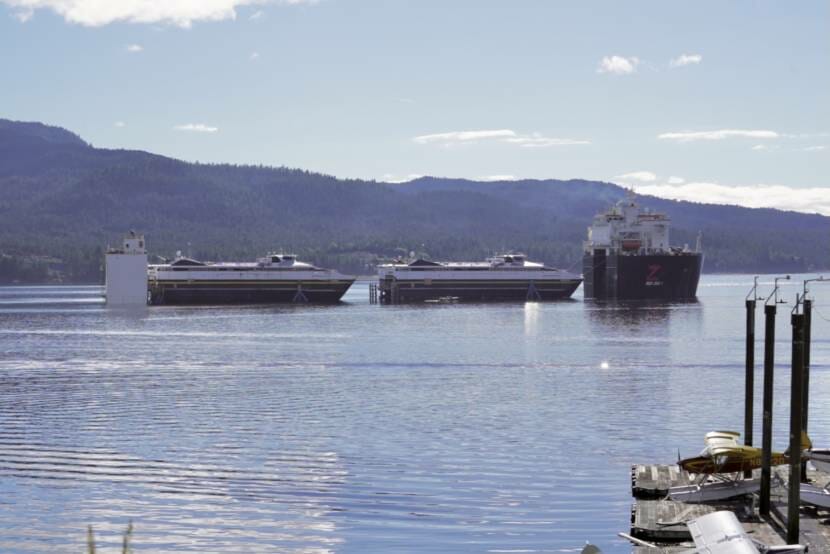
Several people shared fond memories of riding Alaska’s blue and gold ferries. Kathy Gibb Banie said she rode on the Malaspina’s maiden voyage as a baby. But she said she was dismayed by budget cuts in recent years that have meant less service.
“The ferry system is the lifeline down here. Unfortunately, it’s a lost lifeline, almost, and we’re getting tired of it,” she said.
The Spanish ferry operator Trasmapi runs catamarans to and from the island of Ibiza in the Mediterranean Sea. To get there, the Red Zed will ferry them to the Atlantic via the Panama Canal and the Strait of Gibraltar.

